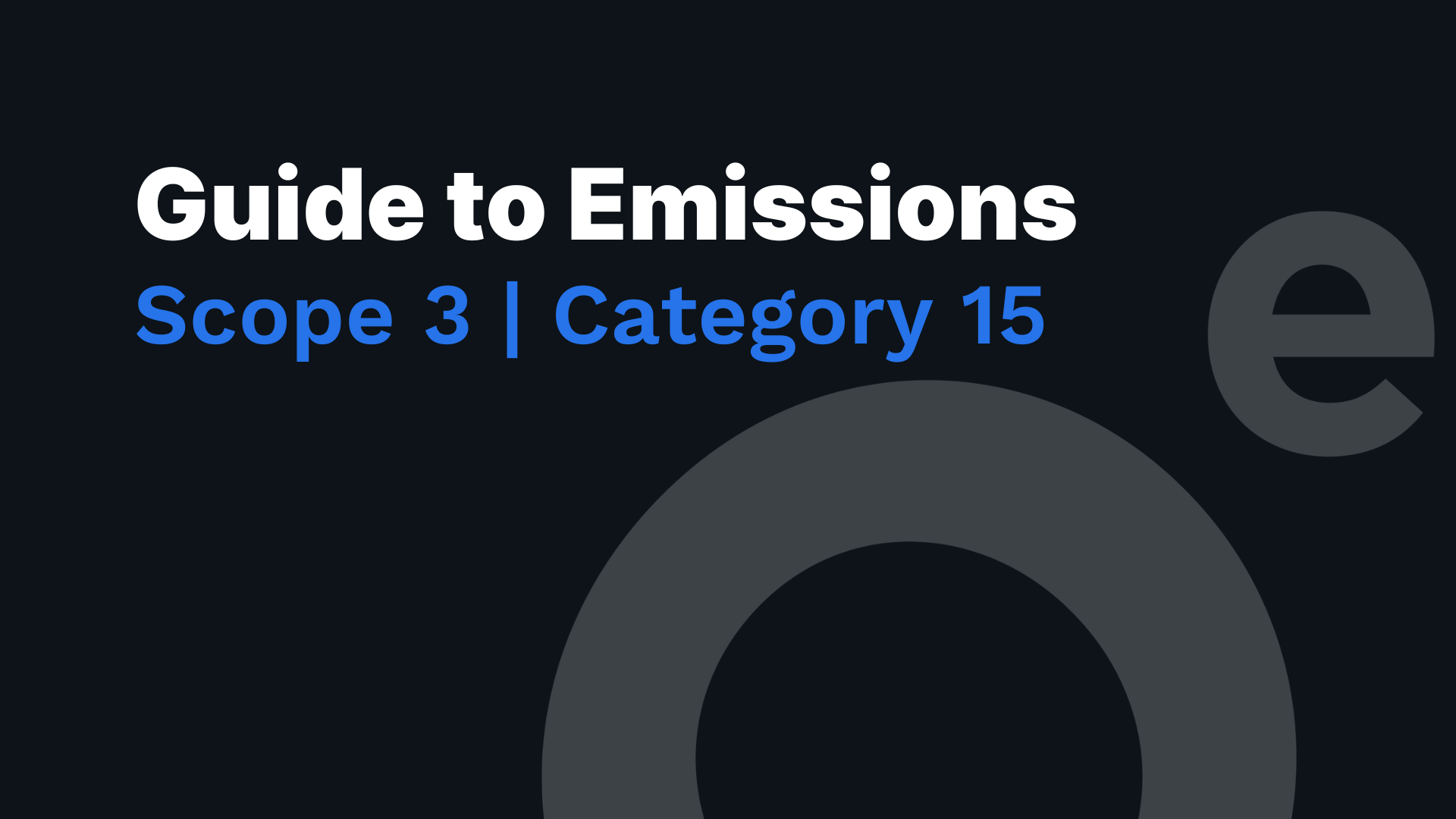What is Scope 3 Category 15 Emissions?
Category 15 covers Scope 3 emissions related to a company's investments during the reporting year that aren't part of Scope 1 or Scope 2 emissions. This category is relevant to investors or financial service providers, both profit-driven and not (e.g., multilateral development banks). Providing capital or financing is a service offered by the reporting company, which is why investments are considered a downstream Scope 3 category.
This category is mainly for private financial institutions like commercial banks, but also applies to public financial institutions and other organizations with investments not in Scope 1 and Scope 2.
How a company sets its organizational boundaries affects if investments are included in Scope 1 or Scope 2. Companies using the equity-share approach include emissions from equity investments in Scope 1 and Scope 2. Companies using a control approach only include equity investments they control in Scope 1 and Scope 2. Investments not in Scope 1 or Scope 2 are included in Scope 3 under this category. Scope 3 emissions from investments equal the investees' Scope 1 and Scope 2 emissions.
For greenhouse gas (GHG) accounting, this standard divides financial investments into four types:
Equity investments
Debt investments
Project finance
Managed investments and client services.
What Data is Needed?
To calculate emissions from investments, you'll need the following data:
Types of investments: Identify the different investment categories your company is involved in, such as equity investments, debt investments, project finance, and managed investments or client services.
List of investees: Compile a list of all investee companies or projects that your organization has invested in during the reporting period.
Investees' operational data: Obtain data on each investee's energy consumption and resource use, such as electricity, fuel, heating, and cooling. This information might be available in investees' sustainability reports or through direct communication with them.
Emission factors: Acquire accurate emission factors for various types of energy consumption and resources used by investees. These factors can be sourced from governmental or industry-specific guidelines, or from organizations like the Intergovernmental Panel on Climate Change (IPCC) and the World Resources Institute (WRI).
Investees' emissions data: Collect Scope 1 and Scope 2 emissions data for each investee company or project. This information may be available through public reports or direct communication with investees.
Organizational boundary definition: Determine the approach your company uses to define its organizational boundaries, such as the equity-share approach or the control approach, as this will affect which emissions are included in Scope 1 and Scope 2, and which are included in Scope 3.
Once you have collected this data, you can calculate your company's emissions from investments by applying the relevant emission factors to the energy consumption and resource use data from investees. Add up the Scope 1 and Scope 2 emissions from all investees not already included in your company's Scope 1 and Scope 2 emissions to determine the total emissions from investments for Scope 3.
What Calculation Method is Available to Count the Emissions?
These methods are listed in order of how specific the calculation is to the individual investment. However, companies need not always use the most specific method as a first preference.
Investment-specific methods: which involves collecting scope 1 and scope 2 emissions from the investee company and allocating the emissions based upon the share of investment; or
Average-data Methods: which involves using revenue data combined with EEIO data to estimate the scope 1 and scope 2 emissions from the investee company and allocating emissions based upon share of investment.
